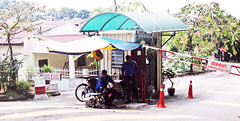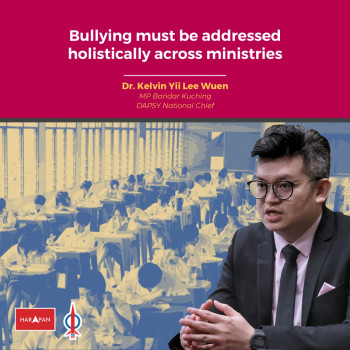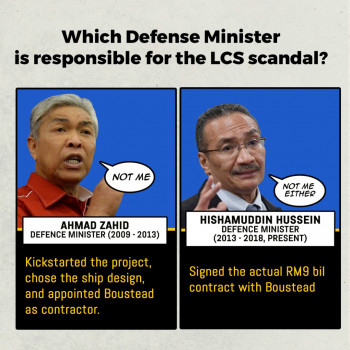Malaysians heaved a collective sigh of relief in September over the departure of one of the most notorious policeman ever to helm the Inspector General of Police (IGP) position. In addition, the government increased the police force’s (PDRM) 2011 financial budget by a whopping RM1.2 billion (28 percent). At a glance, it seems the government’s stated intention to curb crime and restore public trust in the PDRM is turning into actions. However, will PDRM deliver what the public expects of it? Or would it be business as usual?
Looking broadly at PDRM’s strength, it seems adequately staffed with an effective force of 107,455 personnel. This would give it a ratio of one police personnel to 270 citizens, approaching the Interpol recommended figures of one to 250 people. With an average budget of RM41,900 per police personnel in 2010, PDRM seems well-funded to provide reasonable protection for the public’s safety.
However, the security situation in the country indicates otherwise. From 2003 to 2007, the country’s reported crime cases lodged with PDRM increased from 156,315 to 224,998 cases, an increase of 45 percent. Incidentally, the Dzaiddin Royal Commission (RC) report on improving PDRM was published in 2004.
Upon Inspection
Delving deeper into the budget, one will notice some ominous mismatch of priorities in its hiring allocation. The PDRM was allocated 41,883 positions for internal security and public safety. However, the actual strength comes closer to 31,000. These are the police personnel that patrol the streets and provide public safety for the 28 million people in the country. That means each policeman has to protect over 900 people from public felons. In some cities like Petaling Jaya, the ratio is closer to one policeman to 1,154 civilians. How effective would they be in preventing crime?
Nowadays, we are witnessing more urban residents taking matters into their hands, by enclosing their housing areas and turning them into gated communities. Some of these housing areas look like high security areas befitting a military installation, firmly closed to outsiders. Will this be a norm and price to pay in order to live in a safe neighbourhood? What about those who can’t afford to hire security guards to patrol their housing areas?
Another case in point is the commercial crime investigation department. The allocated positions stands at 1,224; however the actual staff strength is closer to half the figure. They are the crime fighters entrusted to solve more than 12,000 cases of white collar crimes involving hundreds of millions of ringgit annually. Are they adequately staffed and trained for the tasks?
Another glaring point is the fact that more than 30 percent of PDRM’s staff is in the management department, i.e. paper pushing jobs. This figure has hardly changed from the RC report of PDRM’s workforce in 2004, which had 34 percent management staffs on its payroll. Could these staffs not be better utilised to patrol the streets or assist in fighting crime?
The Home Minister, when cornered on the shortcomings of the PDRM, lamented the lack of policeman in the force, with some parts of Malaysia having one policeman to 6,000 residents (The New Strait Times, 11 August 2008). However as mentioned earlier, the overall police personnel to civilian population is adequate. What seems lacking is the placing of priorities by PDRM.
Dzaiddin Report
 The Dzaiddin Royal Commission (RC), commissioned in 2004 to investigate and recommend improvements to PDRM, made three crucial recommendations; namely crime reduction, eradication of corruption and compliance with prescribed laws and human rights. The RC hinted at the fact that its past mindset has induced a stupor that has encumbered PDRM’s effectiveness to perform in an increasingly complex and changing world. A strong word of change was recommended by the RC.
The Dzaiddin Royal Commission (RC), commissioned in 2004 to investigate and recommend improvements to PDRM, made three crucial recommendations; namely crime reduction, eradication of corruption and compliance with prescribed laws and human rights. The RC hinted at the fact that its past mindset has induced a stupor that has encumbered PDRM’s effectiveness to perform in an increasingly complex and changing world. A strong word of change was recommended by the RC.
However, as proven from the above statistics and revelation, nothing fundamental seems to have changed for PDRM. This inertia has affected the public’s perception as well. It is an open secret that public perception towards PDRM has been deteriorating for many years.
A public survey conducted in 2004 by the Royal Commission (RC) shows that 41 percent of the respondents were dissatisfied with PDRM’s performance in nine key areas of policing. Then in a Home Ministry online survey conducted on July 2009 on public safety, more than 90 percent of those polled felt unsafe and held that their security was not assured.
As if to rub salt into the public’s wounds, PDRM’s police shooting of suspects reached a shocking 82 and 88 cases in 2008 and 2009 respectively. By comparison, England and Wales recorded an average of five deaths by police shooting per year for the last ten years (The Malaysian Insider, 29 April 2010).
Another peculiar point to note is that the average age of the last five IGP when assuming the position was 54 years. In effect the IGPs are all close to or past retirement age. One wonders if the IGPs had the zeal to propose and carry through reforms when they are already close to their long awaited golden years.
Priorities Revisited
Tan Sri Ismail Omar is given an unenviable task of steering PDRM out of its malaise. He has been exhorted publicly by Ipoh Timor MP Lim Kit Siang and many public figures to be bold and to take an independent stance that upholds public interests first when pressured by the government to do its political bidding. Tan Sri Musa Hassan’s parting shot at calling PDRM to resist interference from those higher up, which was a jibe at the Home Minister, may come to haunt Ismail Omar.
The fact is PDRM has increasingly been used to suppress political dissent to the government. Harassing an opposition party dinner with 900 policemen and condoning off the Perak state assembly with a huge force when snatch thieves and burglars are running rampant on the streets, doesn’t speak well of PDRM’s priorities.
In addition, the RC recommended that police personnel be provided with more and better equipment to perform their duties. For many, it seems nonsensical for the government to spend profligately on buying big ticket military equipment in facing low probability threat. Meanwhile, its citizens face ominous danger everyday on the streets and in their homes because the police are unable to patrol the streets with enough vehicles. For the record, there is no mention of purchase of vehicles for PDRM in Budget 2011.
Resource-wise, PDRM’s money has to be appropriately spent. One of the RC’s findings was that the low level of job satisfaction amongst the police personnel staff was due to their poor living quarters’ condition. The government has allocated RM88 million for this year’s PDRM living quarters’ expenditure. Instead of recruiting more police staffs, perhaps PDRM should heed the RC’s call to spend more on quality housing quarters for PDRM’s staff, thereby improving staff morale.
Truly, PDRM’s misplacement of priorities seems manifest even in the budget. Its deteriorating performance is symptomatic of the country’s malaise; its only effective remedy maybe a thorough revamp in brawn and brains, as seen in the RC’s recommendation. – The Rocket



